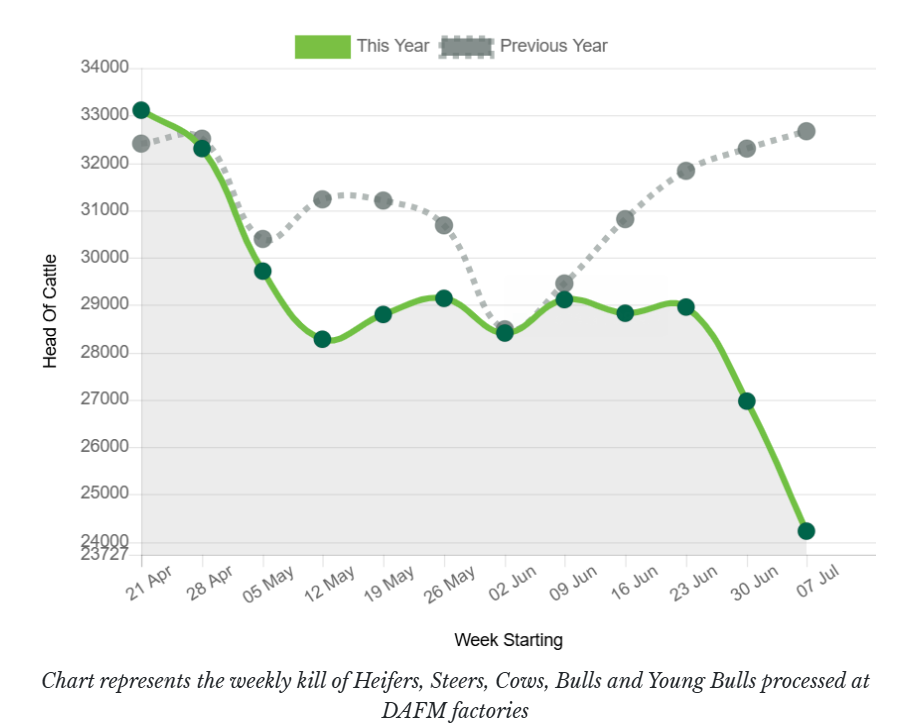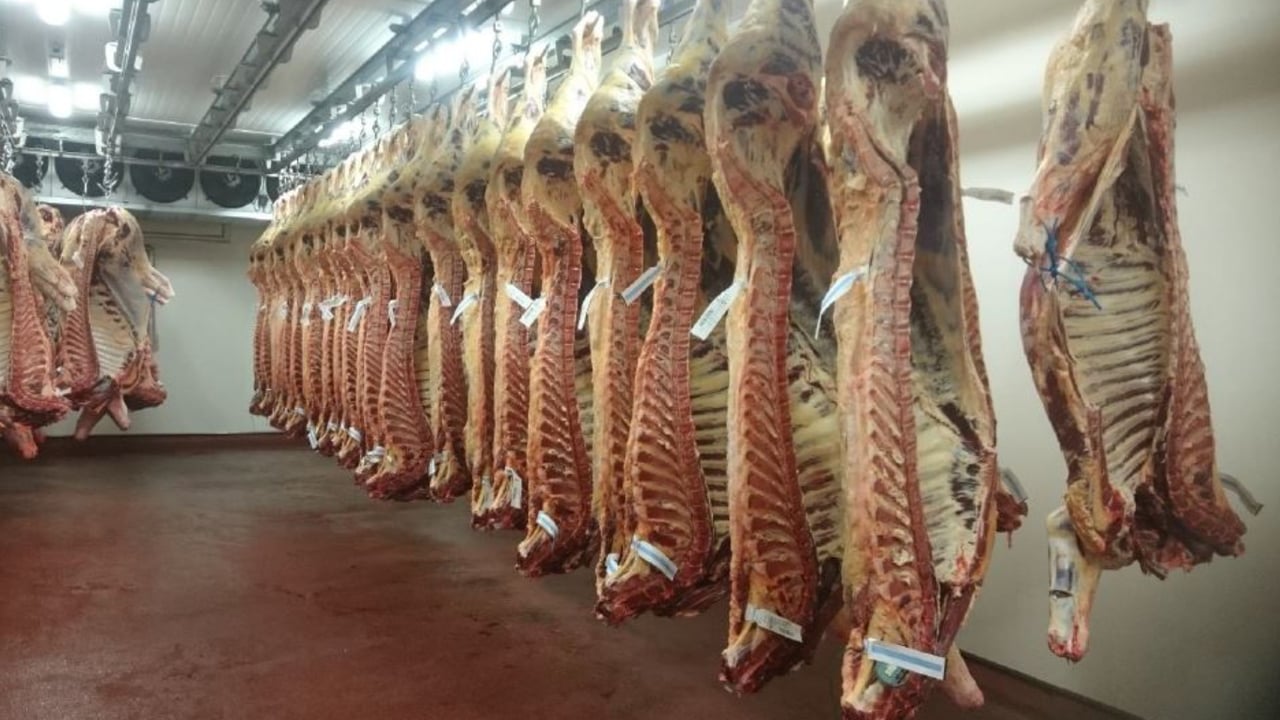Beef kill: Supply drops below 24,500 in lowest kill this year
The beef kill in the week ending Sunday, July 13, (Week 28) has been the lowest-recorded kill to date this year, with just over 24,200 head of cattle slaughtered at Department of Agriculture, Food and the Marine (DAFM)-approved factories.
To put this into context, the largest weekly kills this year were in late January/early February with almost 39,000 cattle slaughtered (excluding veal).
While the drop in supplies is attributing to a welcome lift in prices for farmers, factory beef sale bosses have told Agriland these price rises are supply-led rather than due to the demand factor pushing up the price.
With inventory beef supplies understood to be also low, there is some level of expectation that demand for beef will rise into autumn, which could add to further beef-price positivity.
The graph below shows how weekly beef kill numbers this year have been comparing to last year:

The average price paid for R+3= steers increased by 6c/kg last week to €7.61/kg, with price increases seen in all categories of cattle last week.
Some procurement bosses have told Agriland they expect the beef kill in the week ending Sunday, July 20, to be further below the previous week.
The drop-off in supplies had been forecast since the beginning of the year but has materialised later than was originally expected.
The table below details cattle supplies in the week ending Sunday, July 13, compared to the same week of last year, and the cumulative kill-to-date this year compared to last year:
| Category | Week ending Sun, July 13 | Equivalent Last Year | Cumulative 2025 | Cumulative 2024 |
|---|---|---|---|---|
| Young Bulls | 2,283 | 2,269 | 67,067 | 69,991 |
| Bulls | 429 | 681 | 13,733 | 15,411 |
| Steers | 8,520 | 11,511 | 335,930 | 328,978 |
| Cows | 5,870 | 9,336 | 209,104 | 235,373 |
| Heifers | 7,125 | 8,869 | 293,070 | 270,264 |
| Total | 24,227 | 32,666 | 918,904 | 920,017 |
The cumulative 2025 beef kill has now fallen below 2024 levels, having run above last year until now.
The differential between last year's supply and this year's supply is expected to be 70-90,000 head less for this year, with prime cattle numbers expected to be particularly tight.





